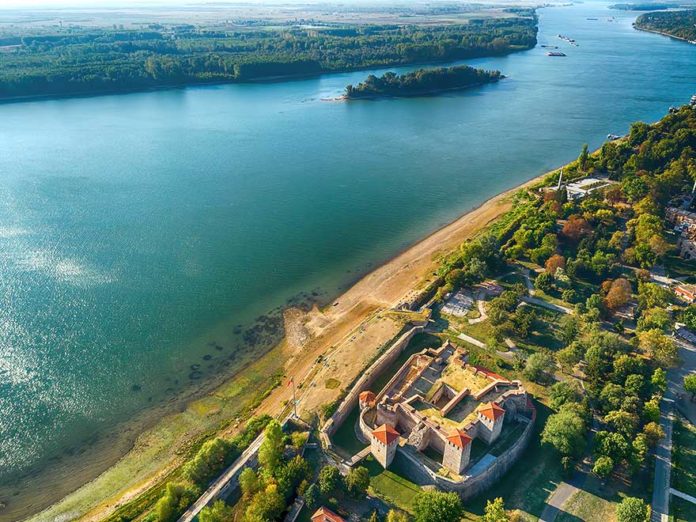Baba Vida, or Babini Vidini Kuli, stands as Vidin, Bulgaria’s medieval masterpiece. It’s the country’s best-preserved fortress, echoing the tales of its medieval rulers. Named after the eldest of three sisters, Vida, who built it, the fortress carries the legacy of familial inheritance and defense.
A Citadel of Stories
The Ottomans knew Baba Vida as the Virgin Fortress, and it never succumbed to conquest. Its trapezoidal form stretches along the Danube’s northwestern shores, embodying Vidin’s historical heart. This fortress was the sturdiest section of Vidin’s Ottoman-era defenses.
Architectural Might
Baba Vida boasts dual concentric walls, towers, bastions, and deftly placed gunports and arrow slits, primarily along its inner embrace. The Austrian Tower and the Entrance Tower guard the outer walls, with the ancient bastion at the south holding tales from the 10th century.
Towers of Vigilance
The Strazhimir Tower, marking the northern inner boundary, and the Voynishka Tower, on the northwestern side, are four stories high. Meanwhile, the three-story Entrance Tower and the two-story Austrian Tower punctuate the outer defenses, each telling its own story of medieval vigilance.
Fortress Features
A deep, water-filled moat encircles the outer walls, leading to a stone bridge and the fortress’s heart through the Entrance Tower. Inner spaces flank the central yard, ascending to the gun (powder) terrace. A guardhouse-like external yard fills the space between the fortress’s layers, partly covered on the southwest.
Dimensions of Defense
Spanning 60-65 meters by 80 meters, Baba Vida’s walls, with the moat’s inclusion, cover nearly 9.5 acres. This formidable structure showcases medieval architectural ingenuity and stands as a testament to Bulgaria’s rich historical tapestry.
View Bab Vida Fortress from above!
A brief history of Baba Vida Fortress
Baba Vida rose from the ancient Roman fortress Bononia’s remnants, transforming into a quaint town. Its construction began in the 10th century, dating back to the First Bulgarian Empire’s twilight. By the Second Bulgarian Empire, it emerged as Northwestern Bulgaria’s paramount stronghold. Its most extensive expansion unfolded under King Ivan Sratsimir’s reign, serving as his feudal castle. Sultan Bayezid II later refurbished and finalized it around 1475-1476. Post-18th century, its defensive role ceased, transitioning into an arsenal and prison.
Today, Baba Vida draws visitors and is celebrated for its medieval significance and ancient Roman roots.



